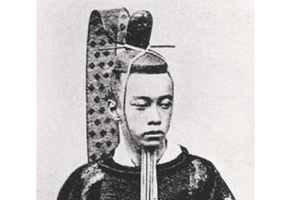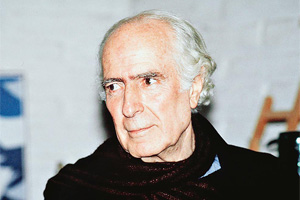Japan’s first inhabitants arrived there from Eurasia during the Neanderthal period, some 30,000 years ago. The Ainu settled in the North, driven there by the Mongols and the Manchu-Koreans who stayed in the centre. Southeast Asian peoples, such as the Malays, settled in the south.
The Jomon period began around 2500 B.C., in which human settlements were permanent, polished stone tools were used and baked clay was crafted.
The Yayoi culture followed from 1760 B.C. onwards, and in this period rice began to be cultivated and metal utensils used.
Yamato Culture
According to legend, Amaterasu, Goddess of the Sun, founded the most important lineage on Earth, the lineage «of the Sun», from which the first Emperor of Japan, Jimmu, descended. This certainly coincides with the appearance of the Yamato civilization at the beginning of the 4th century B.C. which extended its empire from Osaka to all the islands of the Japanese Archipelago creating a centralised state. Jimmu was among its sovereigns.
Buddhism, writing and some technological innovations were adopted from China during the period. At the end of the era, the country descended into a series of rebellions.
Peace and Shogunates
During the Nara period (710-794 A.D.), the capital of the new Japan was established in the city of the same name, peace was re-established and Buddhism and Chinese influences were consolidated. The Heian epoch arose between the 8th and 12th centuries.
It began with Emperor Kammu who, weary of the influence Buddhist had on the government, moved the Capital to Heian or Kyoto. It was under the regency of the Fujiwara family in the 10th century, however, when Japan enjoyed a prosperous and peaceful period, which helped forge the true ancient Japanese culture. A distinct alphabet was created, the court became refined and brilliant, the arts advanced and Buddhism expanded to the middle class.
Nevertheless centralised political power weakened and passed to the Daimyo or feudal lords, together with their vassals, the Samurai or warriors, who acted as policemen for the court.
After many clashes involving the daimyo and samurai, the Minamoto clan prevailed. Yoritomo, from this martial clan, was named Shogun (military leader) by the emperor, who retained only religious functions, in 1185 A.D. The era of the Shoguns had begun.
Unification by War
Yoritomo’s government established the shogunate in Kamakura. Following his death, he was succeeded by the Hojo family, which was named regent by the emperor. The imperial characteristics of the country’s administration became more feudal in style. During this era, known as the Kamakura period, Japan was unified and attained a certain level of prosperity.
The Hojo family was confronted by two Mongol invasions in 1274 and 1281 A.D. which were valiantly resisted by the Samurai, although the invading fleets were also destroyed by typhoons called «kamikaze» or «divine winds» by the Japanese. These events helped to foster a sense of national pride and further united the country.
The Tokugawa Period
During the Muromachi or Ashikaga period, between the 14th and 16th centuries, the shogunate began to weaken and shugo (local military leaders) became more powerful than civil officers, leading Japan into a bloody civil war. In this period, the daimyo exercised absolute power until one among them, Nobunaga, subdued the rest and united Japan once again.
Meanwhile, some Europeans, mainly Spaniards and Portuguese, had managed to enter the Asian nation, and introduced Christianity and firearms. However, when the Tokugawa clan managed to impose their authority in the beginning of the 17th century, they closed Japan to the world, only maintaining relations with the Chinese and Dutch.
They ruled with an iron fist from Edo (Tokyo), suppressing peasant rebellions in which the people sought improvements to their appalling living conditions.
Although this dynasty lasted until 1867, both internal pressure from liberal sectors which saw great potential for development in foreign trade, and external pressure from Western countries, led Japan to accept foreign presence in its territory.
Thus, due to North American Commodore Matthew Perry’s diplomatic and military pressure, the Land of the Rising Sun joined the world once again.








 En 1994 muere el pintor chileno Nemesio Antúnez
En 1994 muere el pintor chileno Nemesio Antúnez